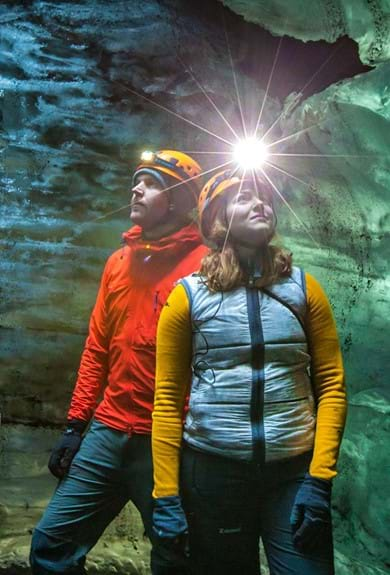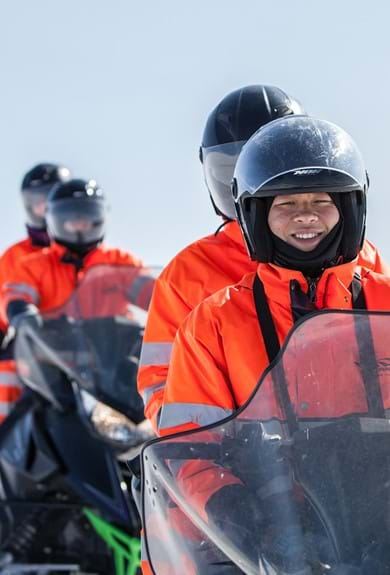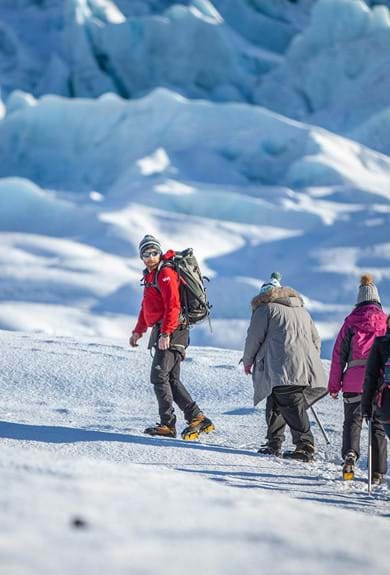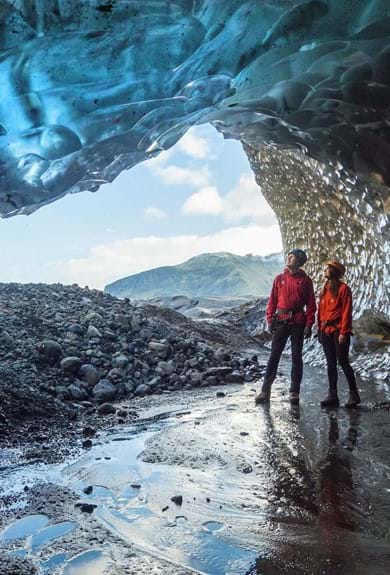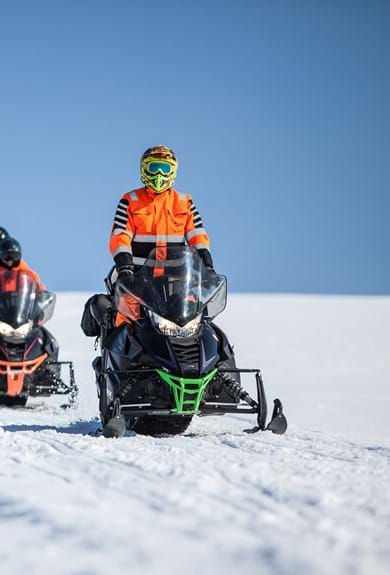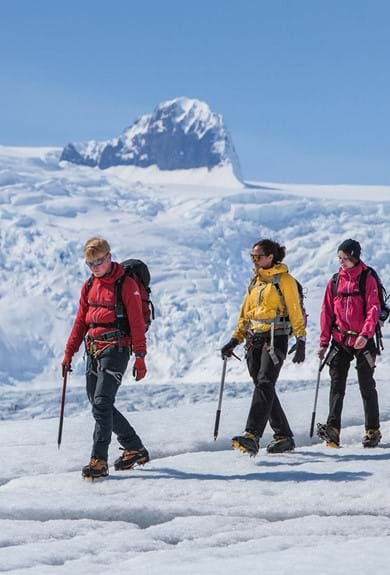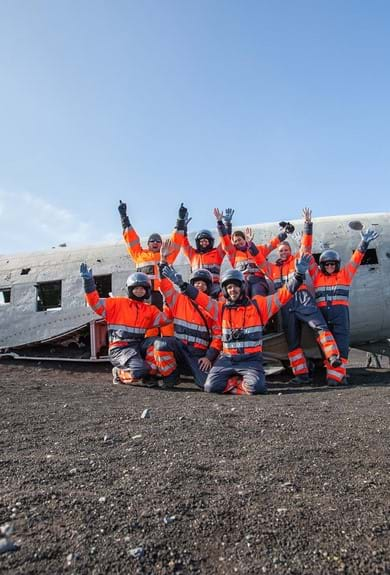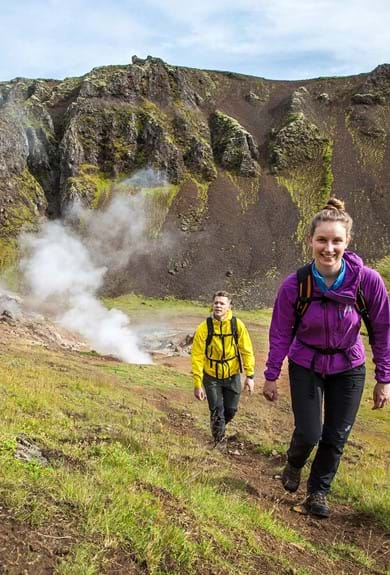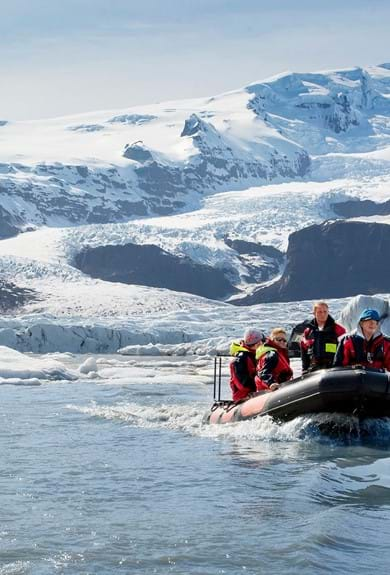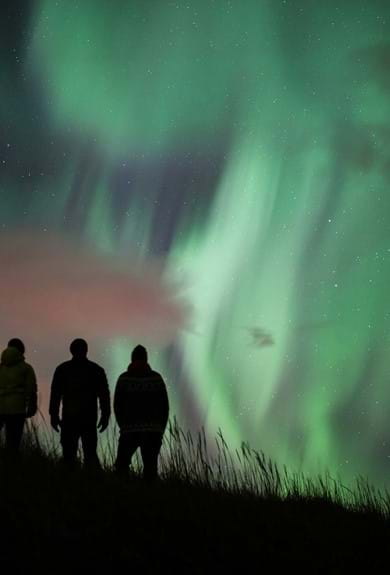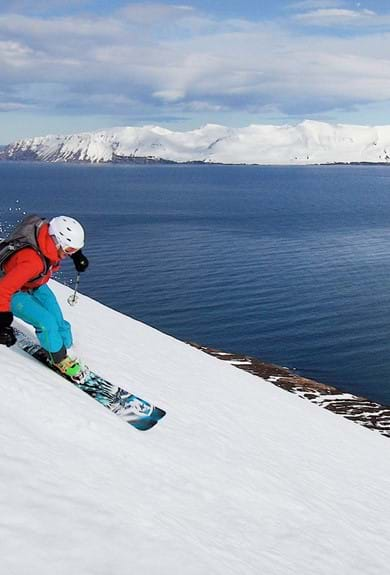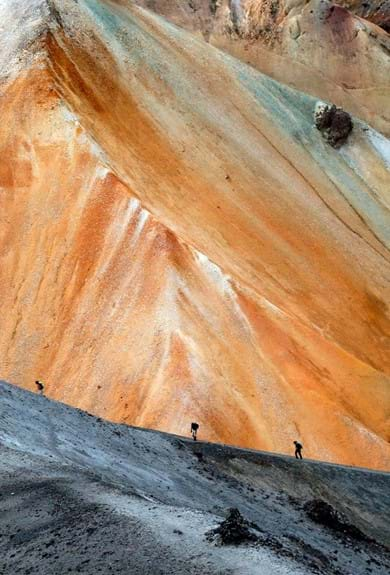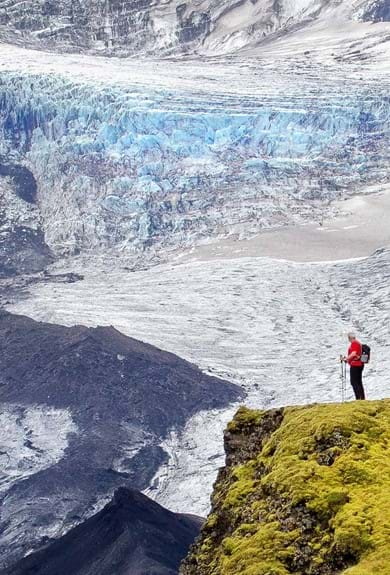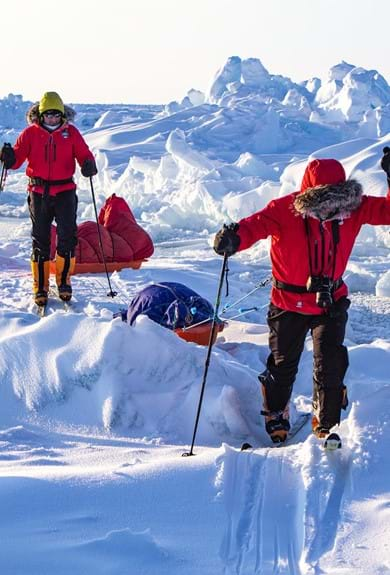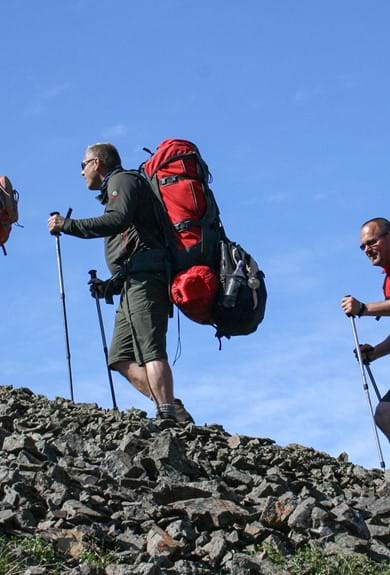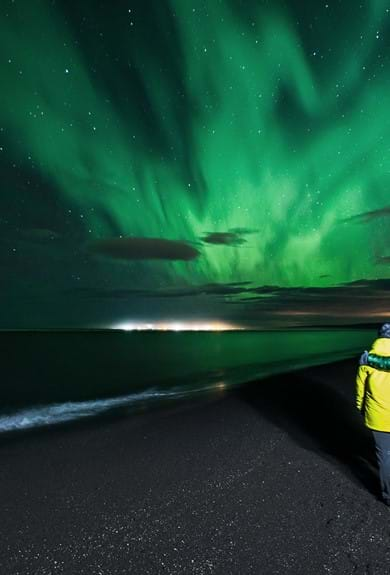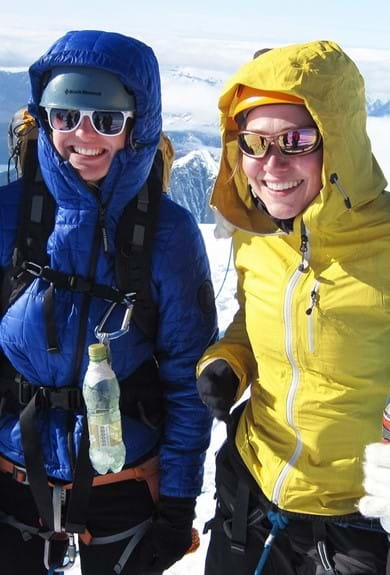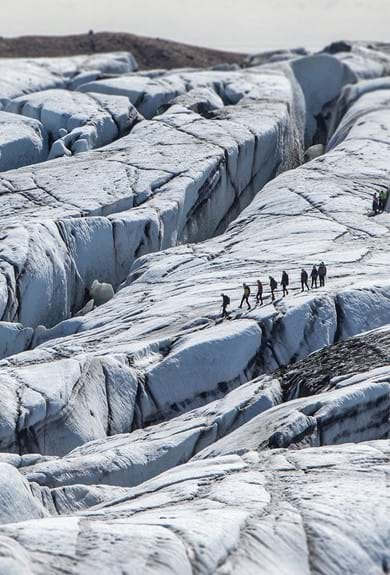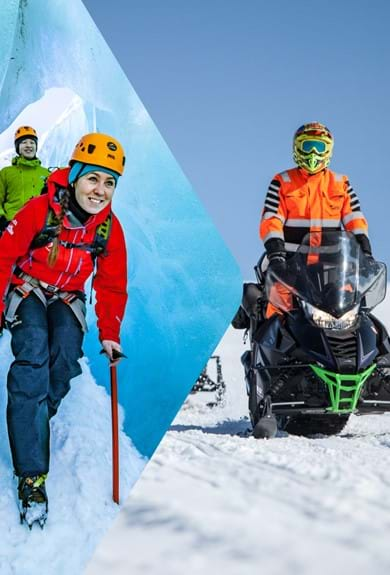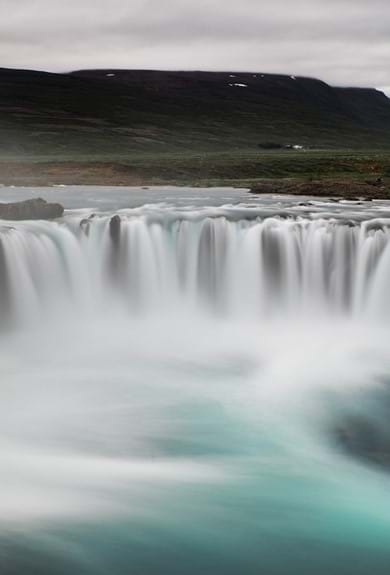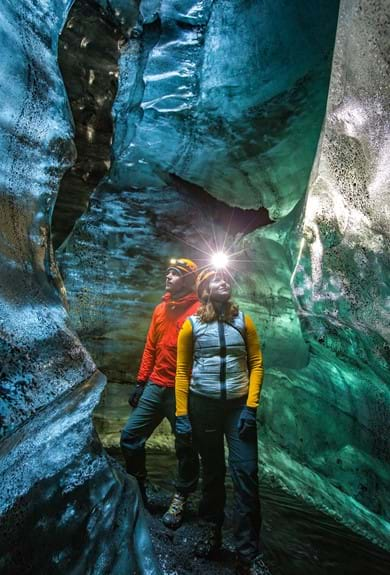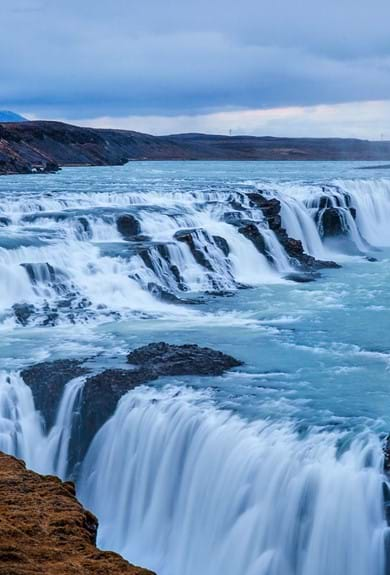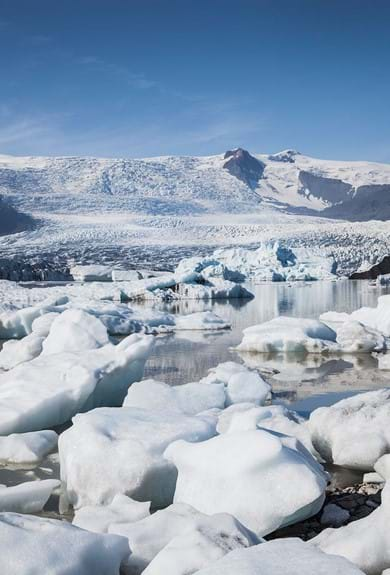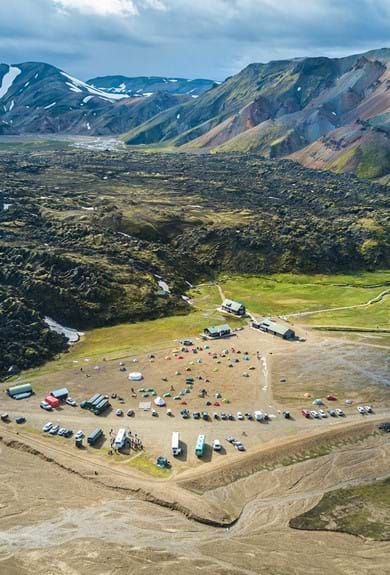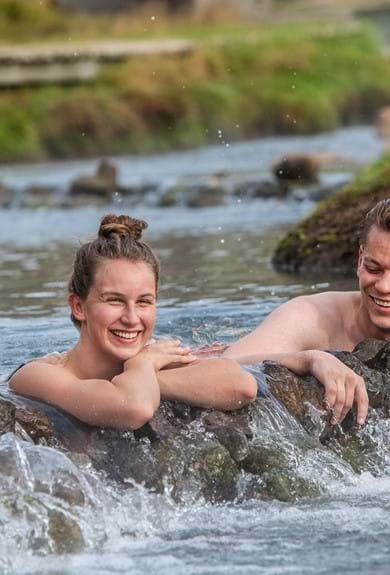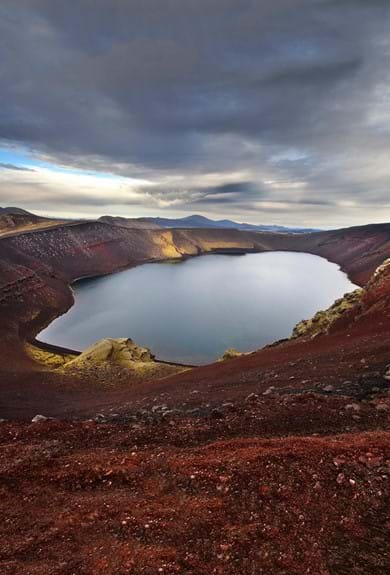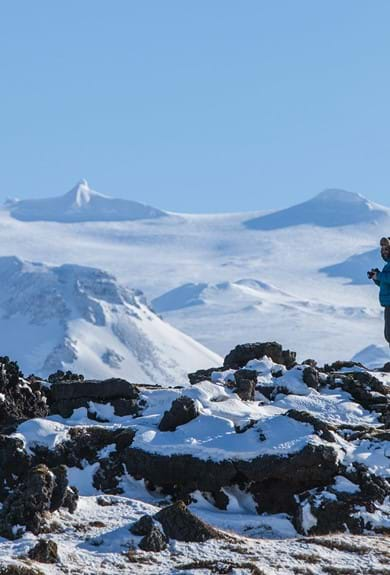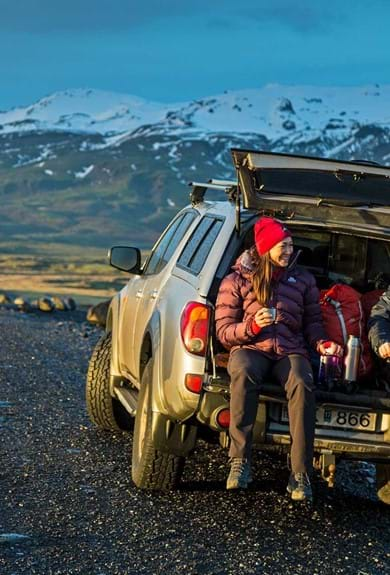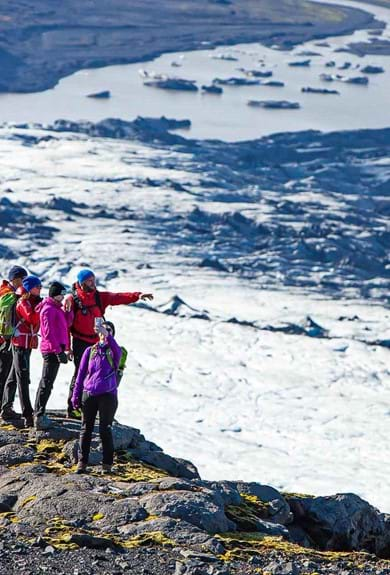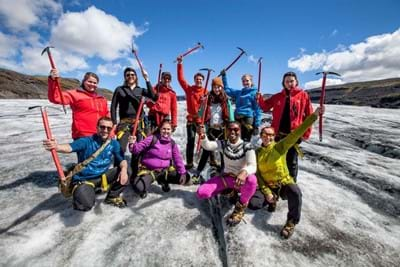Vatnajökull even holds the Guinness World Records of " world's longest sight line". It is said that the glacier can be seen from Slættaratindur, Faroe Islands' highest mountain. More than 500 km away.
Iceland's highest mountain, Hvannadalshnjúkur, dominates the southern part of the glacier. Despite being "only" 2110 meters high, hiking to the summit is easier than one might think. It is certainly physically challenging and takes up to 14 hours to get to the top but technically it is not complicated. The presence of numerous crevasses and ever changing weather still calls for expert guiding (and make sure it's Mountainguides). This is certainly an adventure well worth the effort.
Vatnajökull National Park has many amazing areas. There are breathtaking outlet glaciers from Vatnajökull glacier and the views are simply stunning. This is where many of our Glacier Ice Walks take place. Another is Skaftafell which is well known for its natural wonders and the activities available.
Langjökull
The "Long Glacier" in Icelandic, is the second largest glacier in Iceland (around 950km2). A bit off the beaten track, this glacier is still accesible with a 4x4 vehicle in the summer. The are around Langjökull hosts many wonders. Caves where outlaws used to live, waterfalls, hot springs and more.
A famous highland track, Kaldidalur (Cold Valley) runs west of the glacier. This track begins (or ends) at Þingvellir, the site of the ancient Viking parliament dating back to 930 AD. From there the road heads into the highlands, through the barren mountain pass of Kaldidalur up to the glacier itself. From there you can continue to the Húsafell area and down to Borgarfjörður region.
